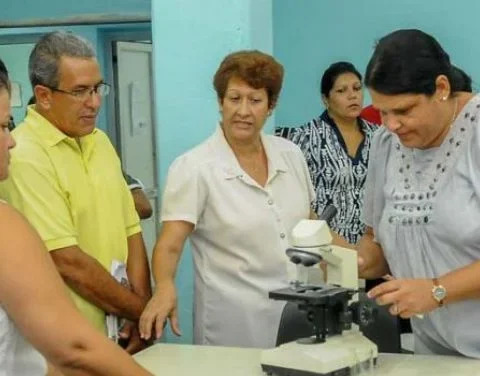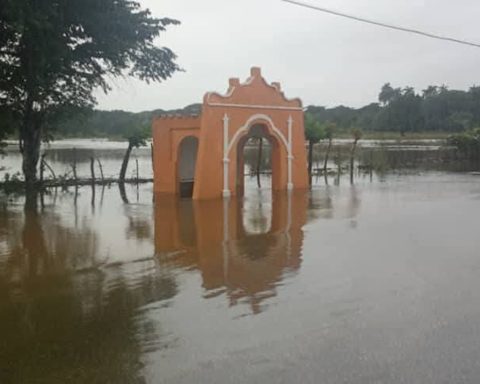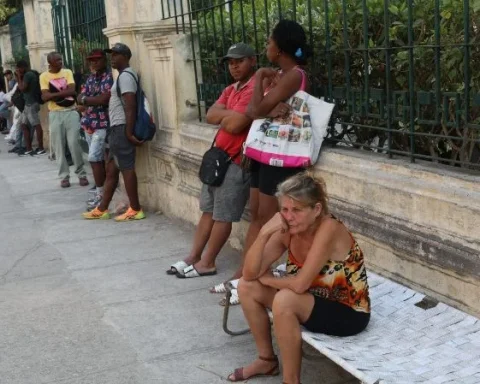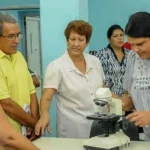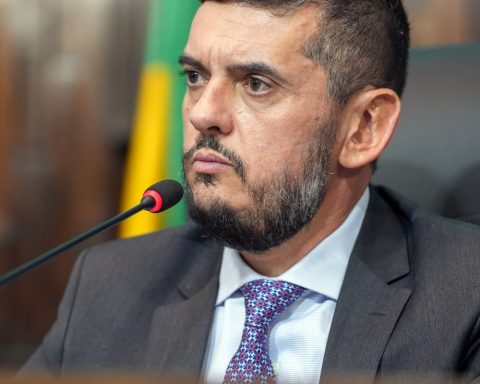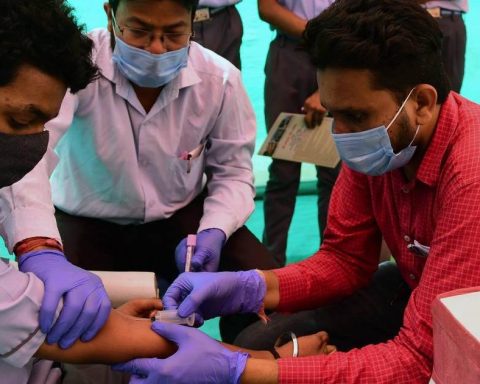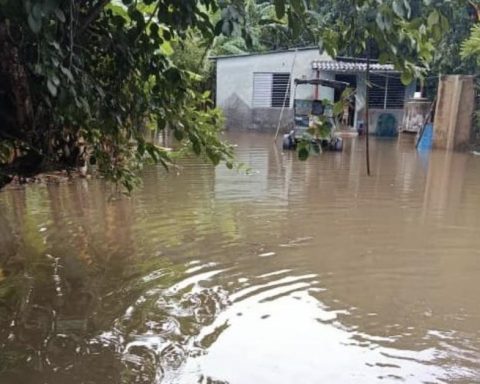For years, almost every day I crossed Fifth Avenue, in Havana, on my way to the university. Of course, he had noticed, among the imposing constructions of the well-known street, one of the most notable, on 82nd Street. It is the Church of Jesus, the largest cult building on the island after the Cathedral of Santiago de Cuba .
The urban landscape was familiar and routine to me; however, I had never seen that temple inside. Many years after my student days, at the end of December 2021 while I was looking for a friend’s wedding party, I wandered around the Church and was encouraged to enter.
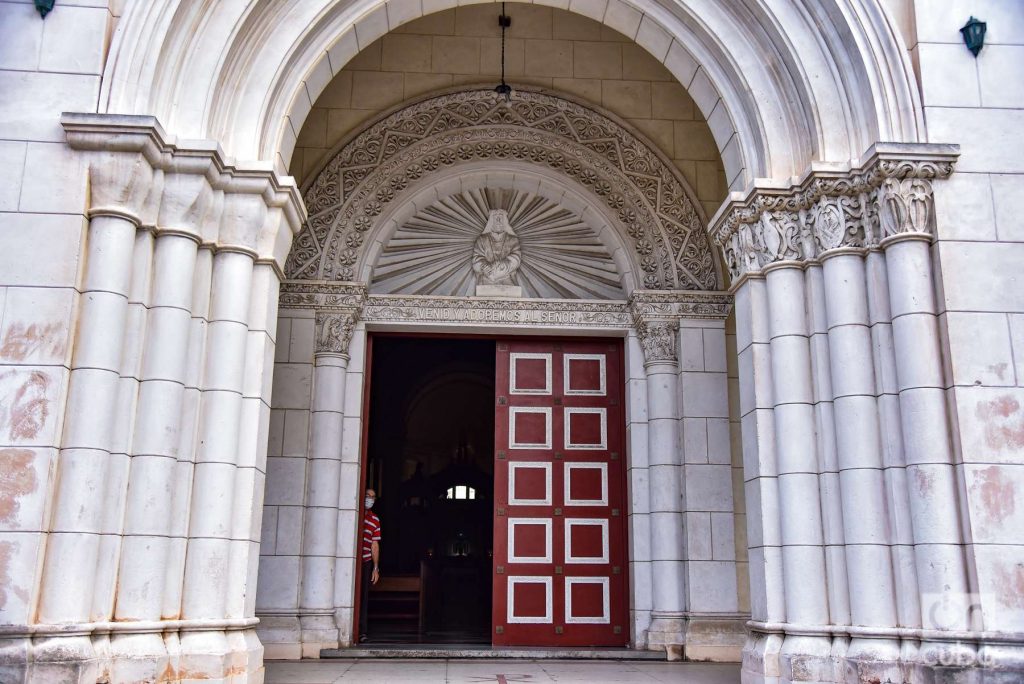
What stopped my step and motivated me to pass was having noticed, from the sidewalk, the presence of a man sitting on a bench, in one of the external areas. I crossed the threshold of a gate and went quietly, slowly, in his direction. As I got closer, a sculpture of a praying woman rose among the plants. In front, he would discover an artificial grotto and a virgin.
That monument is a replica of the Grotto of the Virgin of Our Lady of Lourdes, one of the most recognized dedications of the Virgin Mary.
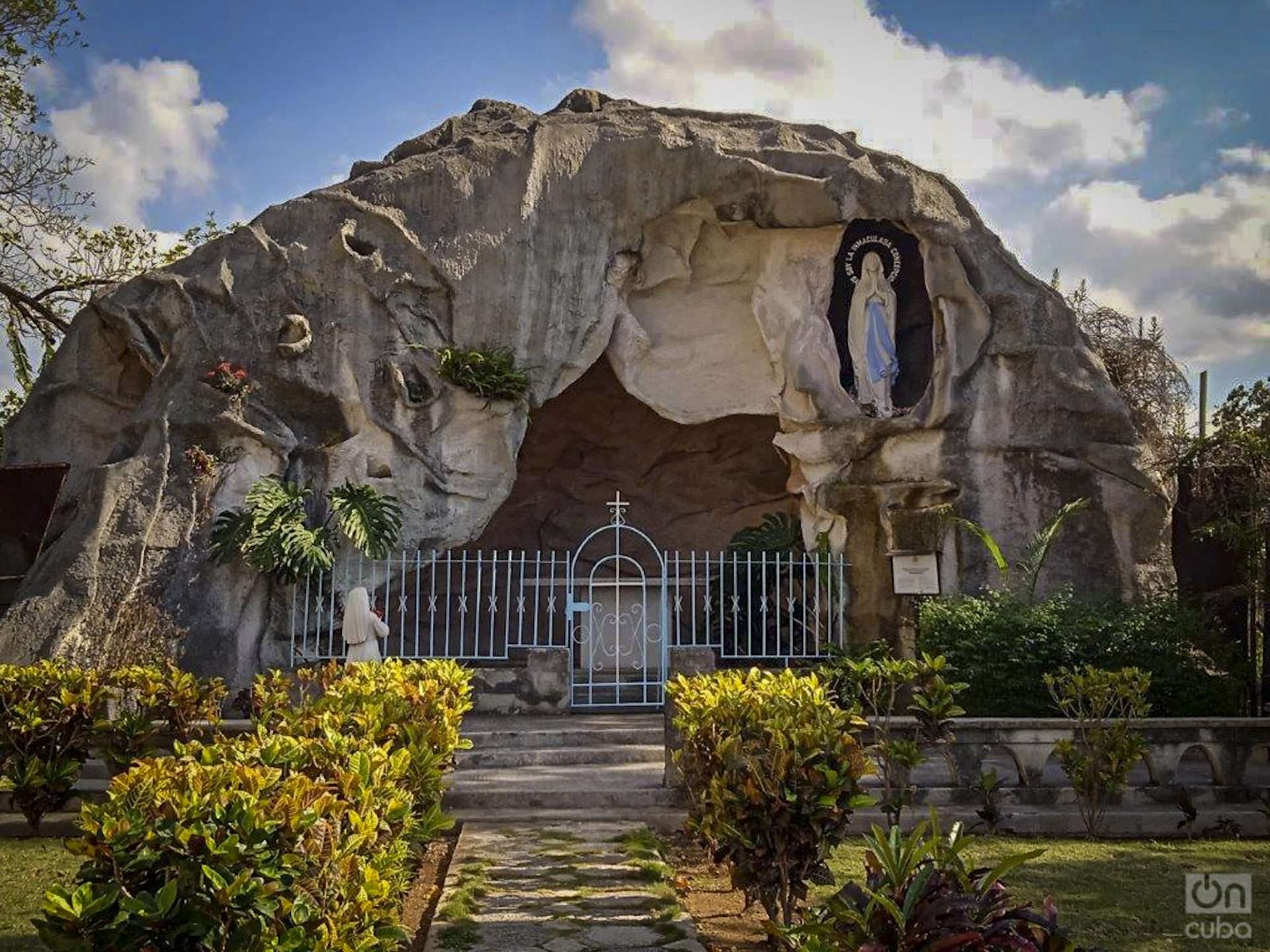
The man remained silent. In my presence, we exchange greeting gestures. “It’s miraculous,” she says to me while pointing to the virgin. “A few months ago I asked for the health of one of my daughters, and the girl recovered. Since then, whenever I can, I come from her and bring her flowers ”.

Our Lady of Lourdes is known in the religious imagination for being the patron saint of the sick. She is credited with countless miracles. According to legend, almost two centuries ago in Lourdes, France, the Virgin Mary appeared in the Massabielle Grotto before a teenage girl. It is said that the event would have been repeated eighteen times during five months.

He knew of the existence of the monument in Havana. What’s more, I thought for a long time that Lourdes was the name of the temple, which is actually called the Church of Christ the King, popularly known as the Church of Jesus of Miramar.
Since I was there and had time before the commitment that awaited me, I toured the building and took these photos.
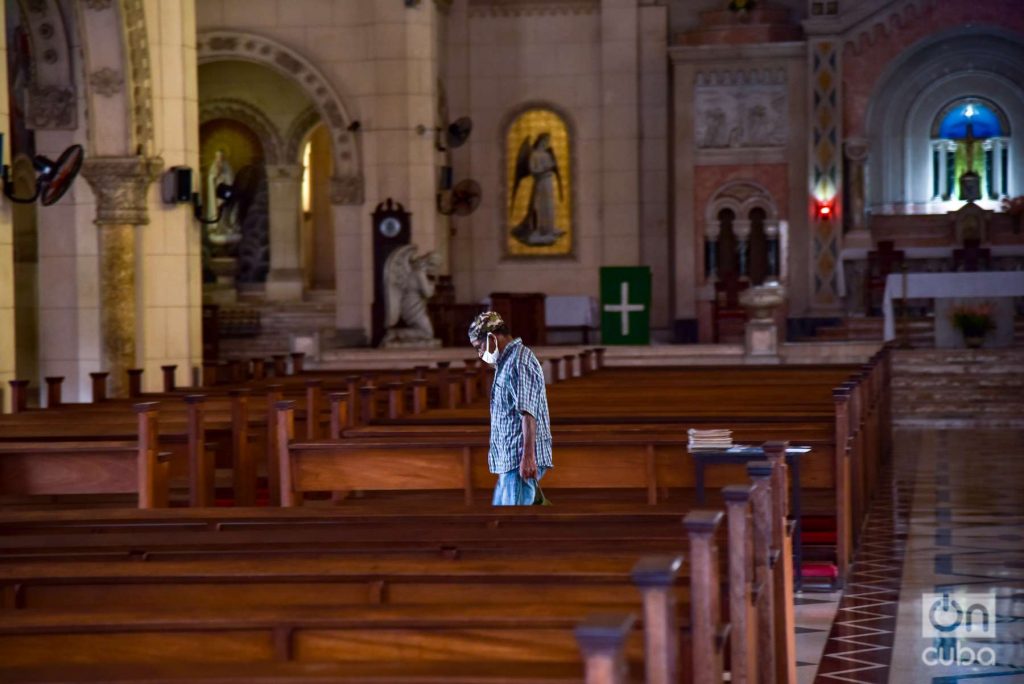
The design of the main floor is in the shape of a Latin cross. A large octagonal dome stands out, the largest in Cuba after the Capitol in Havana.
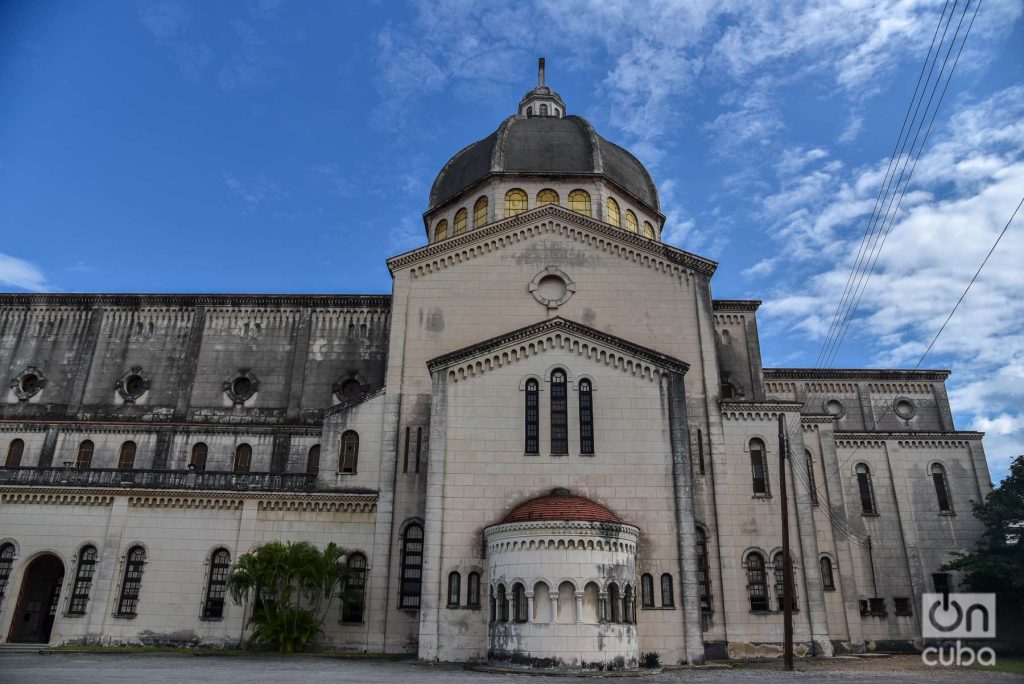
The construction of the property began in 1948, after the approval of the project presented by the Spanish architects Eugenio Cosculluela and Guido Sutter. They devised a building with a neo-Romanesque style and neo-Byzantine winks.
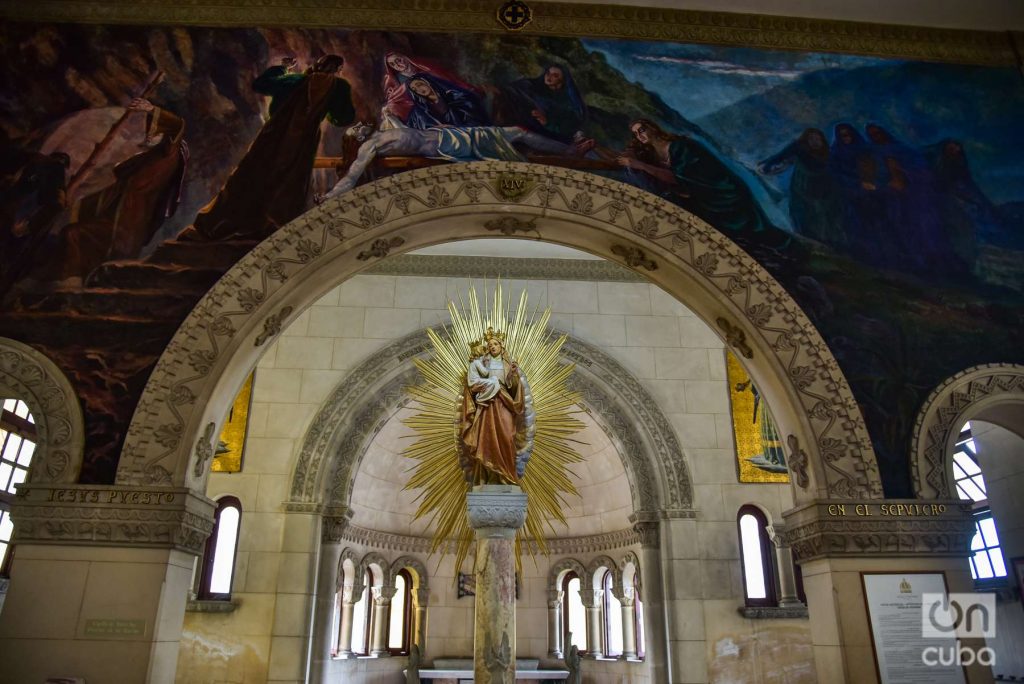
“Its architectural structure is made of reinforced concrete, covered with cement imitating sandstone. The façade, portico and tower (it is unfinished) is made of ashlar stone. The bas-reliefs of the Crucifixion and Ascension of the altarpiece of the main altar, the angels of the presbytery and the altars of the side chapels, are made of marble from Carrara (Italy)”, can be read on a large information poster.

The note also reveals the Franciscan signs of the decoration, “such as the cord, the shield of the Order and the greeting ‘Peace and good’ [Pax et bonum]. There are also symbols of the sacraments and liturgical, beautifully molded in the capitals by the artist Juán Sierra. The floor is decorated in colors, made with terrazzo on site”.
The interior is decorated with semicircular arches and marble columns of different colors.
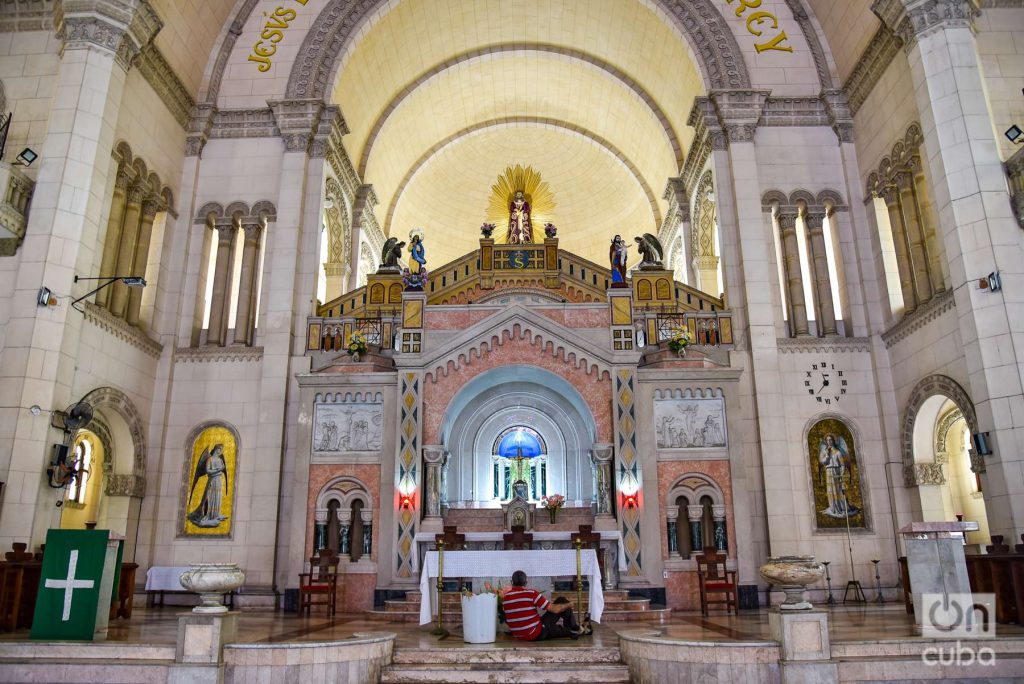
It has two unique chapels. One dedicated to the Patroness of Cuba, Our Lady of Charity of El Cobre; and the other to Santa Ana, the mother of the Virgin Mary. The two images are carved in polychrome wood.
The main altar is presided over by an image of Christ the King, a replica of a sculpture installed in the Basilica of Nuestro Padre Jesús de Medinaceli, in Madrid. The piece stages the moment of the passion of Christ when he is presented before the people by Pontius Pilate.
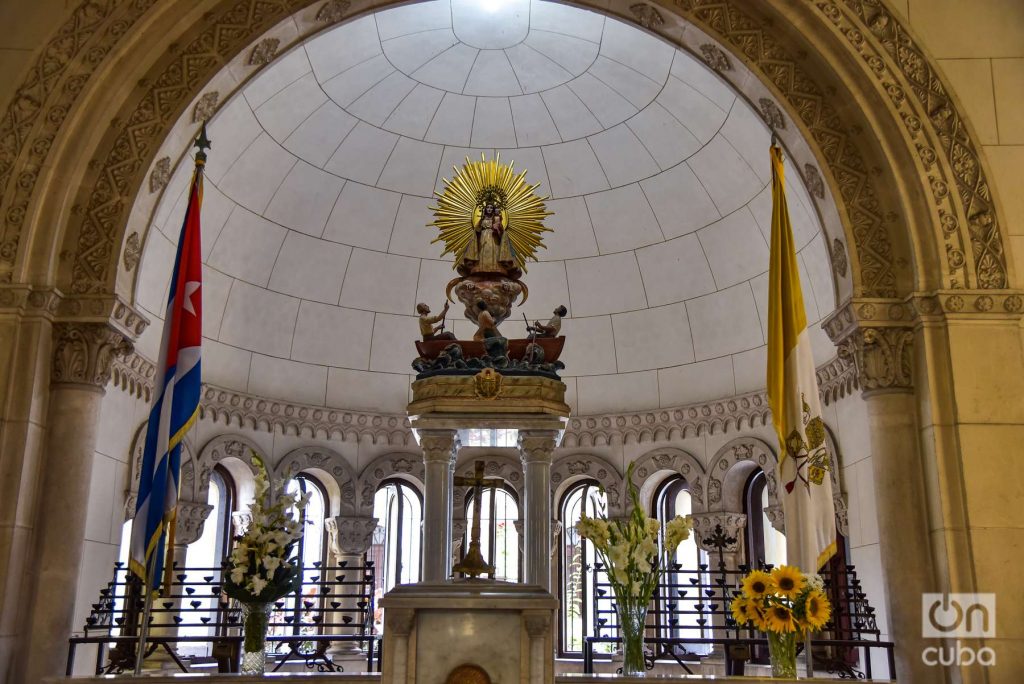
There is a pipe organ, the largest in Cuba, with 5 thousand pipes. It was brought in pieces from Spain and assembled in the church. It has been in disuse for years.
One of the greatest jewels of the place are fourteen murals on the gigantic interior walls. The pictorial set is dedicated to representing the Via Crucis. It is a work by the Spanish painter César Hombradós, who worked on it between 1952 and 1959.

The oil paintings on a very thin metal plate and attached to the wall show two hundred and sixty-six life-size figures. To represent the biblical characters, parishioners and taxpayers who financed the work itself posed. Even the author served as inspiration for some stations in which he portrayed himself as an executioner. His wife, Sara Margarita Fernández y López, posed to shape the Virgin Mary. For his part, to paint Christ, Hombradós looked at the statue that stands in the apse of the church.
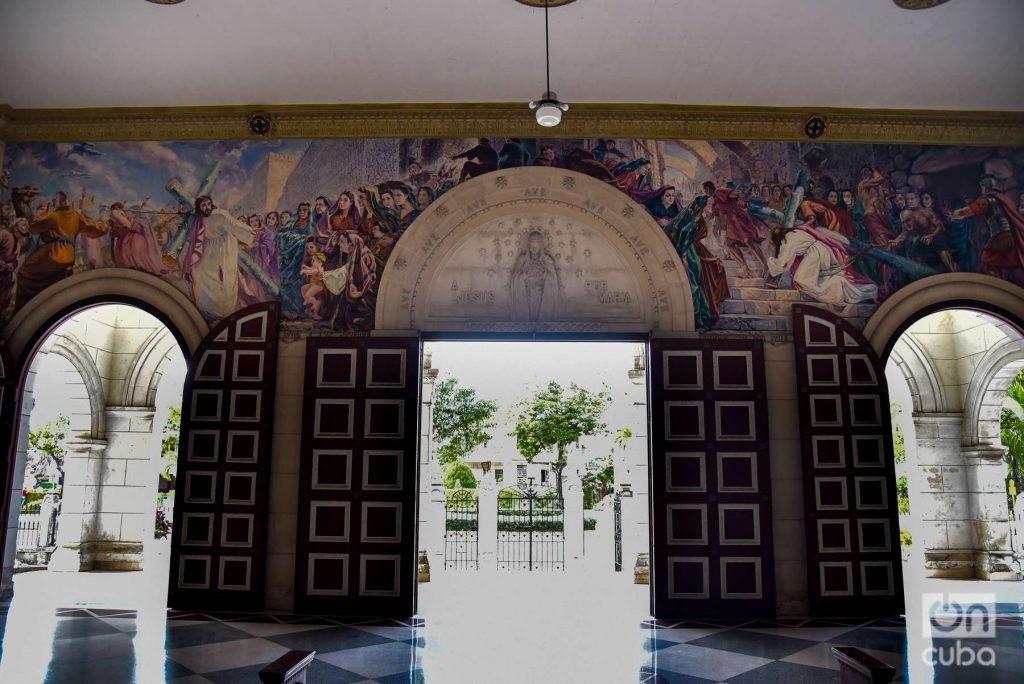
Five years after laying the first stone, the Catholic headquarters was inaugurated on May 28, 1953. Belonging to the Archdiocese of San Cristóbal de La Habana, the temple immediately became one of the most important in the country.
“With the help of the Order and donations from the faithful, this magnificent (still unfinished) temple to Christ the King was built, although it is popularly called Jesus of Miramar.”
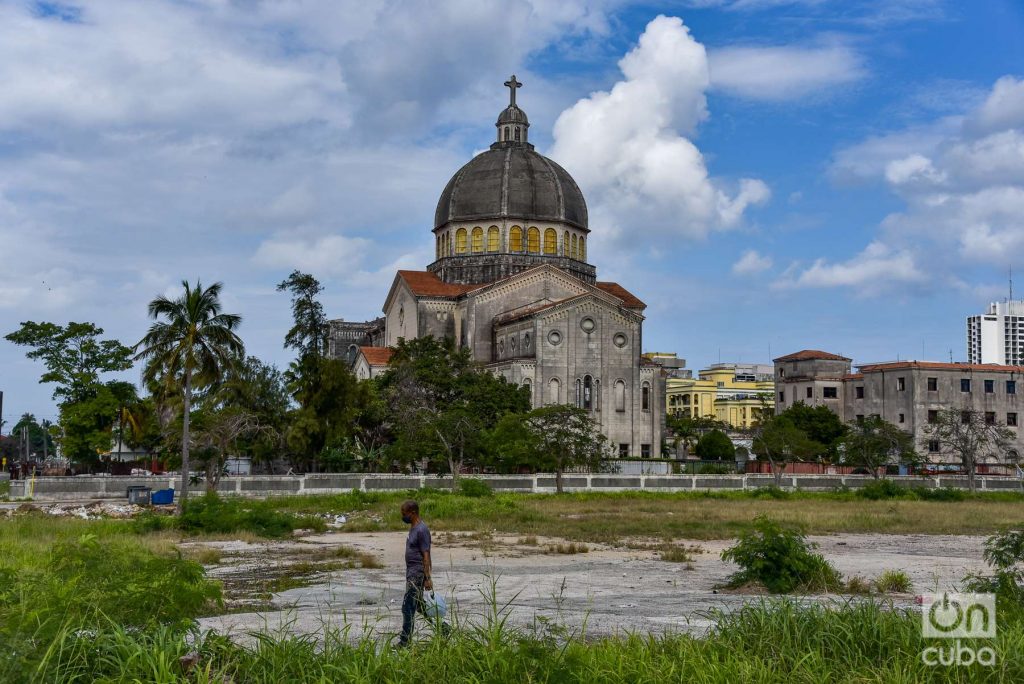
Since its foundation, the Spanish Capuchin Religious have cared for and preserved the temple which, “thanks to the generosity of the faithful and visitors, continue to keep it standing, clean and decent as the house of God deserves”, reveals another sign to the visitors nor Well, one of the three large main gates is passed.
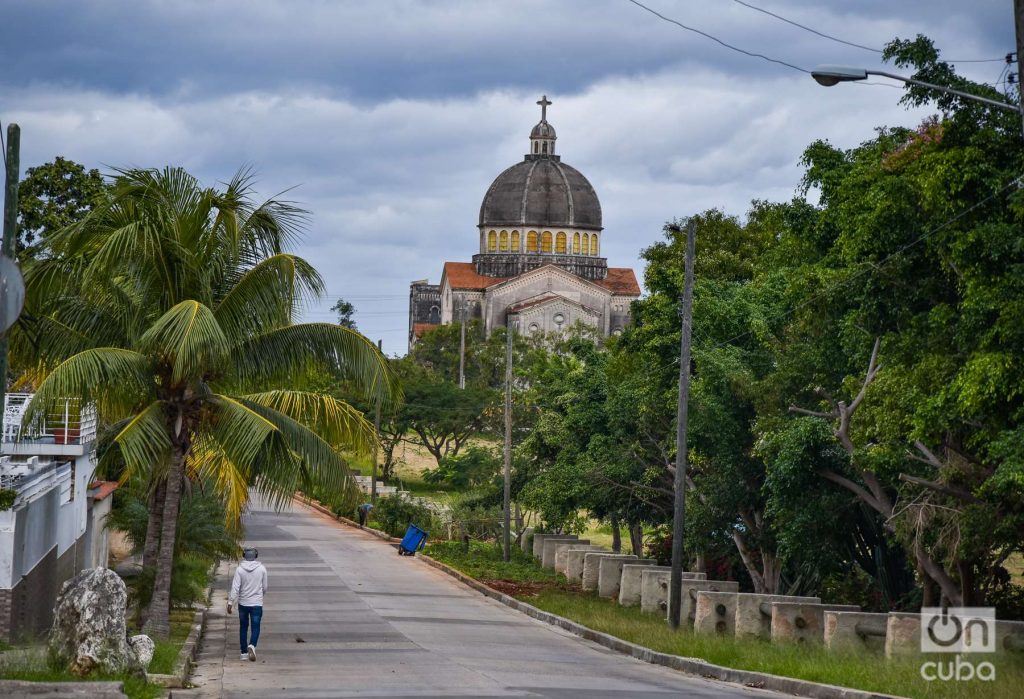
Before continuing towards my appointment, I crossed Fifth Avenue and stopped to contemplate the magnitude of the building through which I passed quickly so many times, without imagining the History and the stories it houses.

